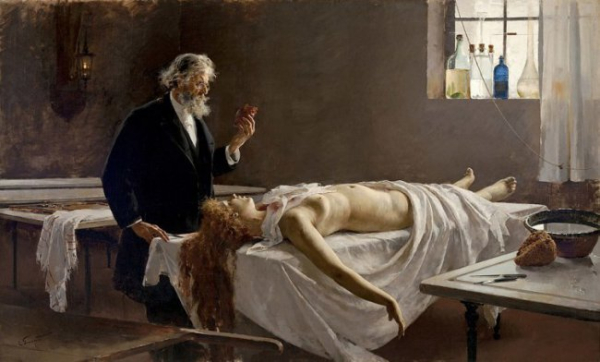
The history of exploring the human body spans centuries. Physicians of antiquity conducted dissections for the benefit of science. Many discoveries related to the study of human anatomy were made by Galen and remained undisputed for many years. A real breakthrough in this field occurred in the 16th century.
And this happened thanks to a certain Andreas Vesalius. This Belgian, who had studied in Paris, was deeply interested in the secrets of the human body's structure. Out of scientific curiosity, he performed autopsies on corpses he had stolen from the Cemetery of the Innocents. At the time, it was quite overflowing with human remains, and no one would have noticed the loss of this “study material.”
However, the bodies removed from the graves were not particularly fresh and could not satisfy the inquisitive student's interest. To avoid dissecting half-decomposed corpses, the resourceful Belgian came up with the idea of performing autopsies on the bodies of hanged criminals, stealing them from the gallows under cover of night. The cause of science was worth the risk he took!
Over time, the young physician moved to Italy, where in Padua, a local judge allowed him to perform autopsies and dissect the bodies of those who had been executed.
It was Vesalius who was one of the first to question Galen's work. He amended his writings, causing a genuine scandal among scholars. Everyone revered the ancient scholar, and no physician or anatomist dared question the veracity of his assertions. And so Vesalius challenged the scientific establishment by criticizing Galen's works.
The 16th century saw a surge in public interest in human anatomy. Anatomical theaters opened in many European cities. The first opened in Padua in 1594. Its building still exists today. One of the most famous anatomical theaters was located in Leiden, the Netherlands. After Peter the Great visited this anatomical theater, similar institutions appeared in Russia.
The anatomical structure resembled a circus. The central space in the amphitheater was occupied by the dissecting table, surrounded on all sides by galleries with seats for those wishing to watch the dissections. To give the “Theater of Death” a more sinister appearance, the organizers “decorated” it with skeletons striking dramatic poses, holding a sign in their skeletal hands, urging the audience to remember death.
The performances were attended by large crowds. The bottom row was occupied by professors, representatives of noble families, and city officials; a little higher were seats for medical students, and the very last, far rows were reserved for the general public.
Performances in anatomical halls were usually held during the cold season, which was explained by the need to ensure the proper preservation of corpses for dissection. Refrigeration systems did not yet exist at that time.
Music played during the show, and the audience was offered snacks and alcoholic beverages. The performance itself was perceived by the audience as something entertaining. People came to the anatomical theaters with their entire families, even bringing small children. Many traveled from out of town specifically to attend the performance in the anatomical theater.
Visiting such an institution was essential for one to be considered an enlightened individual with an interest in science. Moreover, the dissection itself was considered one of the most vibrant and captivating spectacles for the European public in the Middle Ages. Other than public executions, public entertainments were nonexistent at the time. Anatomical museums were considered the top attractions sought by travelers and the wealthy.
The performance in the anatomy theater lasted more than one day. The first was devoted to opening the abdominal cavity. The surgeon, dressed in his best clothes, perfumed and pomaded, performed the dissection. The second day was devoted to opening the sternum, the third to the skull.
The ticket price was raised if a female corpse appeared on the dissecting table. This was explained by the idea that dissecting a woman's body could provide insight into the secrets of childbirth.
In the 19th century, this pastime was so popular that there literally weren't enough corpses! A fresh corpse for dissection cost a pretty penny. Body snatchers operating in cemeteries became a fashionable phenomenon. Relatives of those posing as body snatchers would pay a fee to hire a 24-hour guard to guard the grave to prevent its desecration.
In Great Britain in the first half of the 19th century, an Irishman named William Burke became famous for murdering 17 people and selling their bodies to a Mr. Knox, who earned his living by giving private anatomy lessons. The enterprising Irishman and his friend would spot a victim, then attack and strangle them. They would then sell the corpse to the professor.
However, the cunning killer and his accomplice were exposed and apprehended by law enforcement. Ironically, the killer was convicted and sentenced to death by hanging, followed by public dissection. This was a horrific punishment for any upstanding citizen. No one wanted to end up on a dissecting table after death, surrounded by a curious crowd. However, the scientist who purchased the “terrible products” supplied by Burke was not sentenced.
Today, autopsies are no longer mere public spectacle. What happens during dissection is known only to those who have dedicated their lives to medicine.

Enrique Simone, “Autopsy”





